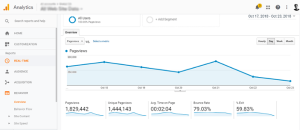by Tom Desaulniers, Op-Ed Contributor, August 4, 2016
In today’s complex marketplace, attracting consumers is getting harder across the various types of available media—including mobile. Many mobile marketers have started the search for new methods to meaningfully engage with their consumers.
One overlooked method is the role of secondary conversions in mobile marketing. Secondary conversion actions are customer actions a brand has defined as valuable to their business after initial engagement from the consumer, such as a “book now” submission, click to call, in-app purchase, or post install event.
These actions are considered important because they are often associated with high conversion rates and high purchase intent. However, these actions are not often taken into account, due to the fact that primary conversions garner most of the focus and attention for most marketing teams.
To put this into perspective, think about the movie “Moneyball” with Brad Pitt. He stars as a beleaguered baseball GM trying to use advanced statistics to even the playing field with big-market teams. In one scene, a character explains sabermetrics and how using data to generate one or two numbers gives better insight into how a player will perform.
Primary conversions represent those one or two numbers—but what about all the other numbers that make up those primary metrics?
Secondary conversions are akin to sabermetrics and represent variables that when combined with other data points makes up the bigger story behind revenue, demand, e-comm checkouts, and mobile app installs.
What are some of the benefits of determining and analyzing secondary conversions?
The Benefits of Secondary Conversion Actions
1. Advertisers have the ability to optimize toward users considered valuable.
2. By looking between the lines, advertisers can optimize their mobile ads to align with the most valuable post-click actions: high conversions, purchase intent, and engagement.
3. Research shows that focusing on a single conversion metric, such as a CTR, is an inaccurate and unreliable measurement of success. And while the reasoning varies, it supports the idea that post-click, secondary actions matter more than the initial click-through.
While many marketers are still throwing around the idea of secondary conversions, it’s important to lay out the dos and don’t s of marketing post-conversion.
Don’t depend solely on CTRs
Click-through-rates may not be good enough to stand on their own in order to provide valuable metrics for a mobile campaign. This is largely due to the fact that mobile devices may include up to 40% of clicks that are accidental—meaning almost half of initial click-throughs are potentially unreliable.
Do consider the relationship between CTRs and SCA’s
Research shows that when CTRs are higher secondary conversion actions are usually lower. This means that as clicks on mobile ads increase you see an inverse correlation with secondary conversions. While this could be due to accidental clicks, a study by xAd and Nielsen found that when a mobile campaign was specifically geared toward secondary conversions consumer actions increased by over 200%, whereas CTR decreased by 25%.
Do think rich. DON’T think simple
Banner ads are considered less engaging than other advertising mediums and don’t fare well when it comes to secondary conversion actions. Whereas rich media, such as mobile video, now outperform all other mobile ad formats and when compared to traditional ads according to a recent report by Smaato and were found to deliver 11x higher eCPMs— an increase of 1,042%.
Do focus on timing and DON’T overwhelm the consumer
Timing is everything in today’s world of advertising. With the rise of ad blockers, consumers are highly selective when it comes to what they want to see when they’re online. In order to appease consumers and provide value, it’s extremely important to time your secondary messaging to align with important mobile moments throughout their active journey.
But while it’s important to stay in contact with the consumer during the process, it’s even more important for marketers to know when to back off.
Overall, there are numerous metrics that marketers must pay attention to in order to be successful, but the truth is that SCAs are a new way of looking at how to engage with your audience beyond a single primary metric and an effective way to generate meaningful engagement with your most valuable consumers.
MediaPost.com: Search Marketing Daily
(51)






